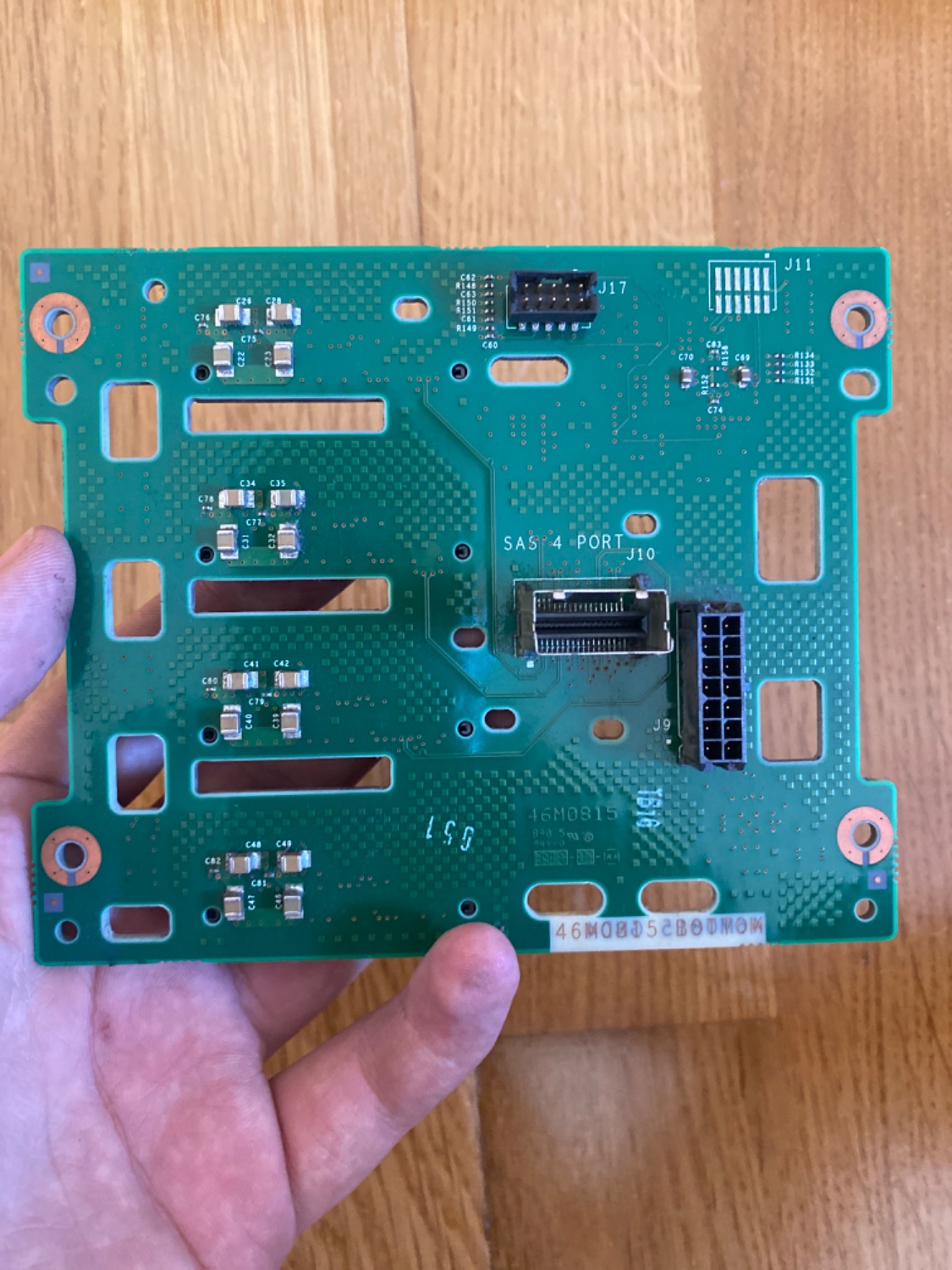I actually worked on the team that designed these! If I recall correctly, the top connector is for the motherboard BMC. It should work fine without being connected. The right hand side as others said is power.
Selfhosted
A place to share alternatives to popular online services that can be self-hosted without giving up privacy or locking you into a service you don't control.
Rules:
-
Be civil: we're here to support and learn from one another. Insults won't be tolerated. Flame wars are frowned upon.
-
No spam posting.
-
Posts have to be centered around self-hosting. There are other communities for discussing hardware or home computing. If it's not obvious why your post topic revolves around selfhosting, please include details to make it clear.
-
Don't duplicate the full text of your blog or github here. Just post the link for folks to click.
-
Submission headline should match the article title (don’t cherry-pick information from the title to fit your agenda).
-
No trolling.
Resources:
- awesome-selfhosted software
- awesome-sysadmin resources
- Self-Hosted Podcast from Jupiter Broadcasting
Any issues on the community? Report it using the report flag.
Questions? DM the mods!
Oh, that's cool.
Why the hatched ground plane instead of solid?
That is not a plane if you look close. That is thieving. The board layout had no copper there, but this can make the plating process more difficult to get consistent across the board. Usually this is added by the fab house to help them manufacture the board.
That sounds like more trouble than it’s worth. You can get a SAS to SATA breakout cable for < $20 on Amazon.
Absolutely this. Save trouble.
If absolutely in need of a backplane, look for old chassis parts from super micro on eBay.
God they’re so expensive now. I bought a 24-port backplane for $37 like 3 years ago and the same one is now $120
The one on the right looks like a 14 pin molex connector. You can buy the plug by itself and make a connector, but finding the pinout is going to be a bitch. As for the one on top, it looks like maybe a USB2.0 motherboard socket.
The one at the top could also be a connector for a serial port for debugging or so.
+1 on that. The User's guide of a similar device (source) mentions a 10-pin CPLD connector Reserved for IBM use
As often with IBM, everything is proprietary 😅
If it can't be found online, could start poking with a multimeter.
Looks like a cpu/gpu type power connector. Even if its a standard plug does not mean its a standard pin out ! Craft computing on YouTube had what looked like a standard plug in his server but it had a 12volt and ground switched, so would have caused some real damage
Looks like a usb, and a molex power connector. You'd have to break out a multimeter to figure out what's active and what's a ground though, and then have to bit bang your way to figure out what each connection does.
Same question on reddit a while ago
As suggested there, I recommend to use a multimeter to identify the power socket pins. Roughly half of them should be ground. Most or all of them should correspond and be connected to the SATA power connector pins on the other side.
